You’ll find them in almost every shop and of varying shapes and sizes, but, at times, the humble notebook has actually played an important part in history. From influencing philosophical thought to illuminating the theory behind The Origin of Species, these examples will show you how important a little copy for keeping records in can be. Some revealed hidden truths about their writers posthumously, while some just helped the writer organize their mind, but all have been important in human history.
10. Beethoven’s ‘conversation notebooks’
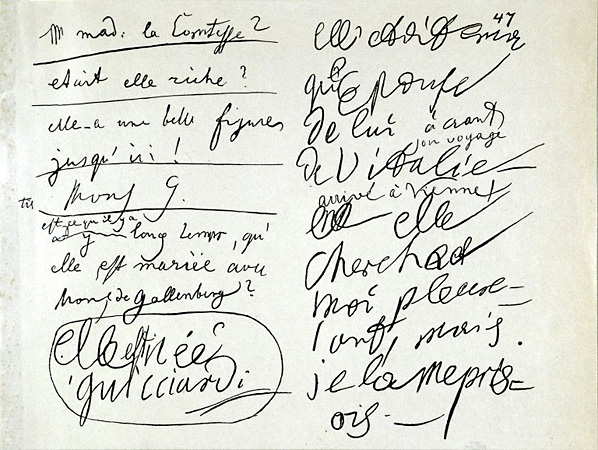
They were just published in full by Walter Nohl of Munich, after being the most prized possession of the Berlin State Library’s Music Department. He used them to compose music, of course, but also to write down quotations of significance to him – things like ‘Tis said, that art is long, and life but fleeting:—Nay; life is long, and brief the span of art; If e’re her breath vouchsafes with gods a meeting, A moment’s favor ’tis of which we’ve had a part.’ He called his notebooks ‘conversation notebooks’. As he was entirely deaf for the last 12 years of his life, Beethoven handed these to his conversation partners whenever he wished to talk. He usually replied orally.
Topics included in his notebooks were worries about indigestion and his eye trouble, food, writing paper and the search for a good apartment – something many of us have experienced!
9. Hemingway’s notebooks
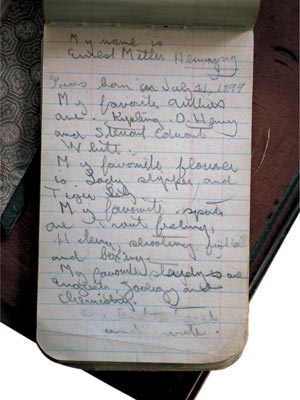
Hemingway is so famous for his love of notebooks that Moleskine boasts about being ‘the heir and successor to the legendary notebook used by artists and thinkers over the past two centuries: among them Vincent van Gogh, Pablo Picasso, Ernest Hemingway’. Hemingway himself said ‘I belong to this notebook and this pencil.’ He was seldom seen without a notebook. He often wrote in little black notebooks, the predecessors to Moleskines, in Parisian cafés. He was a passionate devotee to a pencil and pocket notebook.
In fact, he brought them almost everywhere, not just to cafés – on trains and to bullfights, for example, for note-taking. He also used them to jot down expenses and even to record his wife’s menstrual cycles.
He has been described by Slate as being ‘what we would now call a neurotic’, and keeping records in notebooks helped him organize his thoughts.
8. The Fairchild notebooks

The Fairchild patent notebooks were crucial to our computerised world today. Their contents revolutionized the science and manufacture of microelectronics and launched the incredible growth of Silicon Valley. Ideas including modern semiconductor manufacture, integrated circuits, the technology that lets us power portable digital devices (like the phone or tablet you might be holding right now) and semiconductor memory all came from these notebooks. The engineering notebooks were kept by prominent people like Gordon Moore and Bob Noyce (founders of Intel), Jean Hoerni, Julius Blank, Eugene Kleiner, Victor Grinich, Jay Last, and Sheldon Roberts.
Incidentally, the notebooks also paved the way for Moore’s Law, the so-far-accurate idea that computer processing power would double roughly every two years.
A conservation project was started for them at the Computer History Museum two years ago when Texas Instruments donated the notebooks to the museum. Kathleen Orlenko assessed over 1,000 of the notebooks, dating from 1957 through the 70s.
7. Thomas Edison’s notebooks

Thomas Edison amassed approximately five million pages of writing in his sixty-year career as an inventor. He used notebooks to organize notes on his inventions and innovations. A note at the end of his pocket notebook for October 1870 says ‘all new inventions I will here after keep a full record’. These notebooks were used by him and his colleagues. The Thomas Edison National Historical Park has more than 3,000 of these notebooks, each with around 280 pages. It’s believed that his prolific writing and experimenting may have stretched up to 3,500 notebooks. He received the most US patents ever awarded to one person (1,093).
These included the light bulb, alkaline battery, phonograph and motion picture camera. Keeping notebooks was a life-long habit of his that helped him structure his ideas from conception to execution – tremendously important for our world today. He used them for everything, from brainstorming to recording results, and they helped him pursue his goal of making one minor invention every 10 days and one major one every six months.
Not only did they help him in his incredible productivity, the notebooks are also a highly valuable tool for modern-day historians trying to get an insight into his mind.
6. Heidegger’s black notebooks

German philosopher Martin Heidegger’s black notebooks sparked controversy when they were published in March 2014. He was widely viewed as a seminal thinker in the Continental tradition (a branch of philosophy that includes existentialism, German idealism, psychoanalytic theory and French feminism and the rejection of science as the ultimate method of understanding phenomena, among others). He became professor of philosophy at Freiburg. He was the most important Continental philosopher of the 20th century. His book Being and Time is a seminal work in the Continental tradition and he is widely considered the father of modern atheistic existentialism. He also made a difference outside philosophy, in areas as varied as architecture and theology.
He was involved in Nazism, but it was thought that this was a personal matter, not one that had leaked into his philosophical thinking – until, that is, the publication of his Black Notebooks. Heidegger wrote a kind of philosophical diary in little black-covered notebooks over forty years. They show that he actually incorporate anti-Semitic ideas into his philosophy, like when he wrote ‘the Jews, with their marked gift for calculating, live, already for the longest time, according to the principle of race, which is why they are resisting its consistent application with utmost violence.’
This has led to people wondering whether all of his highly influential ideas were contaminated by Nazism. As his writings inspired some of the most important thinkers of the modern era, these notebooks cast their reliability into doubt.
5. Sartre’s notebooks

Works published during philosopher Jean-Paul Sartre’s life showed that he agreed with Hegel that humans struggle against one another to win recognition but rejected some other aspects of Hegel’s philosophy. However, notebooks published after his death, titled Notebooks for an Ethics, displayed a dramatic about-turn in his thinking on the matter. The notebooks said that he now agreed with Hegel that the master/slave dynamic can be transcended through relations of mutual recognition – basically, the notebooks revealed a very different philosophy.
His work Existentialism is a Humanism presented arguments similar to Kant’s, which led to many scholars saying Sartre’s ideas came from Kant. However, in his notebooks he dismisses this idea and rejects Kantian ethics as a form of ‘slave morality’ and an ‘ethics of demands’. Ouch!
Sartre’s original ideas on freedom were widely criticized, and in the notebooks he too became critical of his early view. Thus, the notebooks are a very important tool for understanding the philosophy of a key figure in the study of existentialism.
4. Charles Darwin’s notebooks
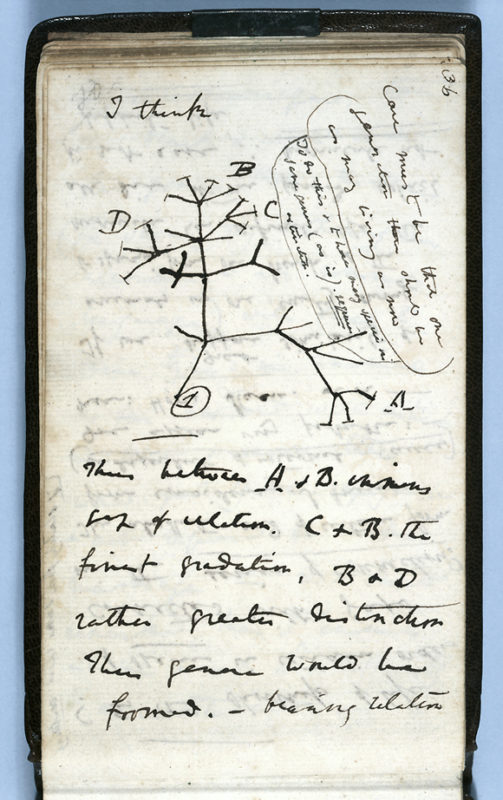
Darwin kept diaries in notebooks throughout the Beagle voyage that would lead him to think of the theory of evolution. He took fourteen of them on his trips to the shore. During the voyage he kept field notes on his observations. As the voyage drew to a close, he also used one (his Red notebook) for theoretical speculations on subjects like geology and the formation of coral reefs. After the voyage he started a new series of notebooks for his thoughts on transmutation (evolution) and metaphysical enquiries.
The notebooks give a detailed account of his research, speculation and gradual understanding of where species come from. In his Notebook on Transmutation of Species (1837) he drew the first tree of descent with modification, or natural selection – more commonly known as an evolutionary tree. This sketch has become famous. The notebooks were mostly completed by the 1840s. These notebooks were essential to the development to the widely accepted and hugely important theory of natural selection, and the precursor to The Origin of Species.
3. Albert Einstein’s notebooks
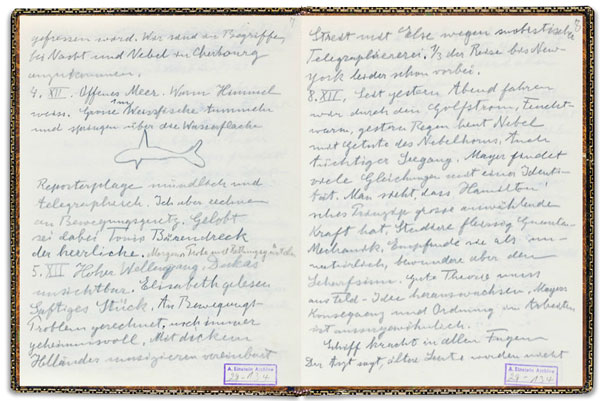
Like Thomas Edison and many other eminent scientists and inventors, Einstein kept a notebook to record his calculations and ideas. In March 2012, 80,000 documents written by or addressed to Einstein were published online by Hebrew University of Jerusalem and the Einstein Papers Project (EPP) at Caltech. This collection includes Einstein’s notebooks, which show the thought process of a revolutionary genius.
One of these is the Zurich notebook, written in the winter of 1912/13. This notebook shows how Einstein came by his theory of relativity, complete with notes and calculations. Other notebooks show lecture notes. The notebooks and letter show that he didn’t work alone, but actually exchanged ideas with many other scientists.
The Zurich notebook shows light-hearted sketches by Einstein, include mathematical puzzles of the day – so even he liked to have fun. The rest of the notebook has serious physics, including electrodynamics in four dimensions, the line element of general relativity, motion in curved surfaces, gravitation, invariants and the Riemann Tensor.
The notebooks give a valuable insight into the day-to-day workings of a brilliant mind.
2. The Prison Notebooks
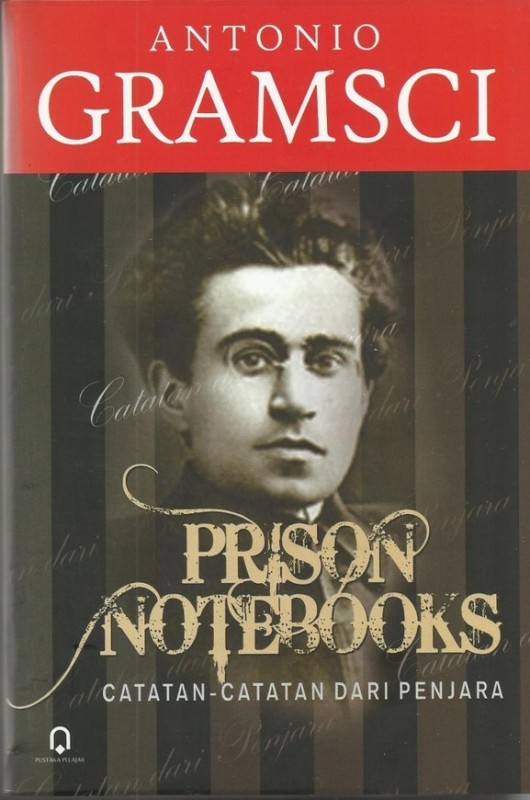
The Prison notebooks are a series of notebooks written by Italian Marxist Antonio Gramsci while he was imprisoned in 1926 by the Fascist regime for being the founder and leader of the Communist party. Gramsci was a philosopher, politician and political theorist. He wrote more than 30 notebooks with 3000 pages of history and analysis while he was imprisoned. The Prison Notebooks are thought of as a highly important and original contribution to 20th century political theory.
Gramsci’s writings pre-prison had been more specifically political, but The Prison Notebooks are relatively theoretical. Topics covered included education, intellectuals, fascism, hegemony and Marxism. He wrote these under the surveillance of a Fascist jailer, so he had to be careful about what he wrote. Because of this, his writings are disorganized and at times ambiguous. He was isolated from the events occurring outside prison, especially Stalinism and the victory of German fascism.
The notebooks were smuggled out of prison in the 1930s and published twenty years later.
1. Leonardo da Vinci’s notebooks
Leonardo da Vinci’s notebooks are famous for having been written in mirror script, from right to left. Some say this was to make them harder to decipher, but it may just have been because da Vinci was left-handed and wanted to avoid smudging the paper. He wrote in his notebooks daily, finishing with about 13,000 pages of work.
The notebooks record the many interests and endeavors of this all-round Renaissance man, from maths to art to flying machines and diving suits. He wasn’t picky about what he put in his notebook, which is lucky, as it has given historians a precious resource. Leonardo made an inventory of his clothes in a notebook now held in Madrid, while in others he adds little memos to himself and shopping lists – all alongside complex mechanical notes and studies of human anatomy.
These notebooks have had a huge cultural influence. Even today, modern inventions like tanks and water pumps can be traced back to those notebooks.
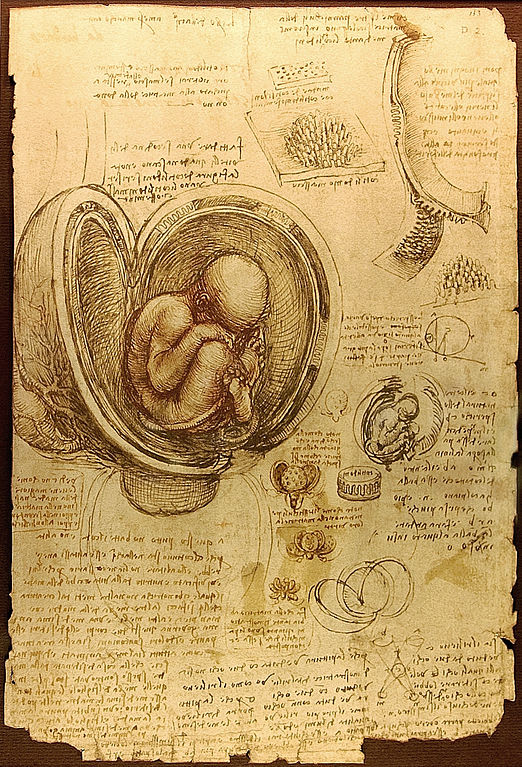
2 Comments
You did an excellent job both in content and visual presentation with this article.
It must be difficult to choose from the many great journalers of history but you did a great job representing everything from science, arts, literature and philosophy.
Congratulations.
A detailed article “Invention of the Planar Integrated Circuit & Other Stories from the Fairchild Notebooks” with links to pdf copies of some of the books is posted at: http://www.computerhistory.org/atchm/invention-of-the-planar-integrated-circuit-other-stories-from-the-fairchild-notebooks/